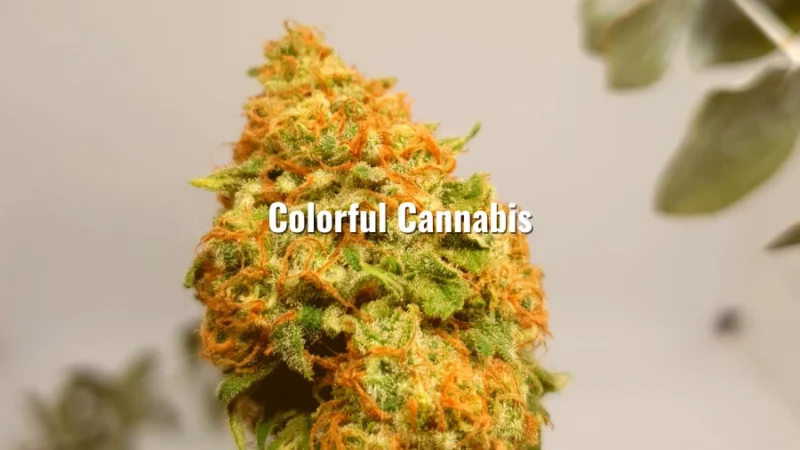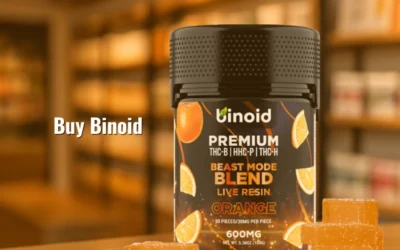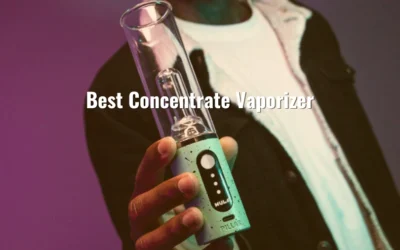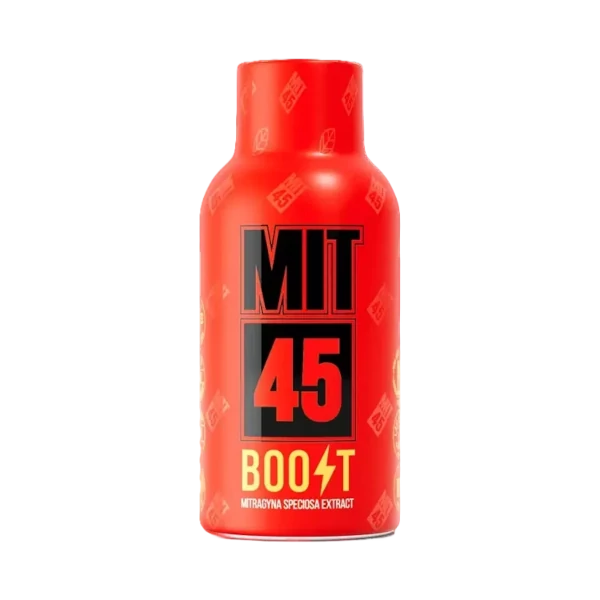Walk into any dispensary, and you’ll notice it right away. Out of all the jars on the shelf, there’s always one that pulls your attention faster than the rest. Not because of the strain name. Not because of the price tag (not from afar at least). But because of the way it looks. Deep purple tips. Bright orange hairs. Sometimes a frosty, almost neon glow. Colorful cannabis has a way of stealing the spotlight before you’ve even asked what it is.
And it’s not just in-store. Scroll through social media, and the posts that rack up likes usually aren’t plain green buds; they’re the rainbow ones. The showpieces. The kind of THCA flower that makes people stop, zoom in, and comment things like “🔥🔥🔥” before they’ve even thought about potency.
That instinct makes sense. We are wired to notice color. We associate vibrancy with quality, freshness, or something worth paying attention to. Cannabis taps into that same part of the brain. But the shades that make a bud look like royalty don’t always line up with what it’ll actually do for you. So today, let’s dive into what that colorful cannabis means.
Blog Summary:
Colorful cannabis is more than eye candy. They come with stories about how the plant grows, what it’s been through, and how we interpret it. But not every story is as straightforward as it looks. In this post, we’ll uncover:
- Why our brains can’t resist vibrant buds
- The pigments that paint cannabis beyond green
- How genetics and environment shape each harvest
- What makes rare hues so fascinating
- The truth behind the stronger myth
- Clues color gives us
- Why flavor depends on terpenes
- How to appreciate beauty without being fooled by it
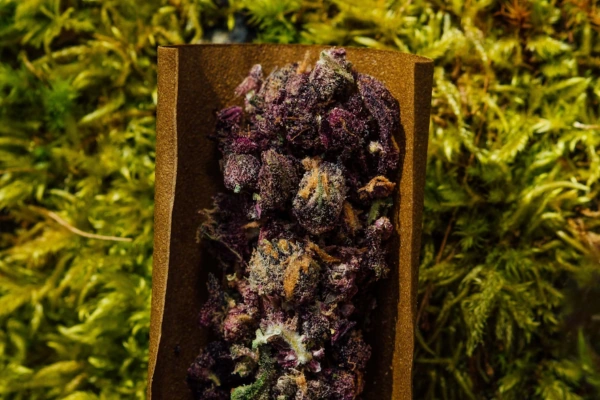
Table of Contents:
- First Impressions
- The Science of Cannabis Color
- Genetics vs. Environment
- The Rarest Hues
- Myth-Busting Potency
- Reading the Clues in Color
- When Color Tricks the Palate
- Beyond the Rainbow
First Impressions
Color is one of the fastest signals our brains process. Long before lab tests or product labels, we learned to judge safety and quality based on appearance. Bright berries stood out as food, dull ones warned us to stay away. That instinct never left us.
When it comes to cannabis, the same reflex is at work. A bud with saturated hues instantly feels fresher and more desirable than one that looks flat or faded. It doesn’t matter if you know the science or not. Your eyes are already nudging you toward the more colorful option.
That’s why growers, photographers, and even dispensary displays lean into color. It creates an impression of quality before you’ve smelled the jar or asked about the strain. And while color alone can’t tell you everything, it sets the stage for how you interpret everything that follows.
The Science of Cannabis Color
So what actually makes cannabis colorful? The short answer is simple and not at all shocking: pigments. The same natural compounds that give fruits, vegetables, and other flowers their range of shades. In cannabis, three main players show up:
- Chlorophyll: the green foundation. It’s what keeps most buds in that familiar leafy spectrum.
- Anthocyanins: the pigments responsible for purples, reds, and blues. They become more visible when chlorophyll levels drop, especially in cooler temperatures.
- Carotenoids: the source of yellows and oranges, often the same compounds that make carrots orange or fall leaves turn golden.
Each one works a little differently, and together they decide how a bud looks once it’s harvested and cured. The balance isn’t random, but it isn’t a guarantee either. Two plants from the same strain can lean in different directions depending on how they were grown.
Genetics vs. Environment
Color in cannabis comes down to two forces: what the plant is programmed to do and what it’s exposed to while growing.
Genetics set the baseline. Some strains naturally lean purple or orange because they carry stronger pigment-producing genes. Studies on cannabis leaf pigmentation have identified specific genes tied to anthocyanin production (the same family of compounds that give berries and grapes their red and blue hues). That’s why two plants from the same “strain” can sometimes look different. The genetic expression isn’t always identical.
The environment is what brings that potential to life. Cooler nighttime temperatures make purple tones more likely, since they slow down chlorophyll and let anthocyanins shine through. Light spectrum, nutrient balance, and even mild stress can also tilt the outcome. In fact, a recent cultivation study found that certain temperature ranges directly boosted anthocyanin levels during flowering.
The Rarest Hues
Most of us are used to seeing cannabis in shades of green, maybe with hints of purple or orange if the strain leans that way. But every now and then you’ll come across something that looks almost unreal: Buds so dark they border on black, or flashes of pink and deep blue that feel more like tropical flowers than cannabis.
These rare colors happen when genetics and environment line up just right. Certain strains carry unique pigment pathways that are only triggered under very specific conditions, like sharp nighttime temperature drops or unusual nutrient balances. The results aren’t common, which is exactly why they generate so much hype when they show up.
Seasoned smokers often chase these outliers the way wine lovers chase a rare vintage. Not necessarily because they guarantee a different effect, but because they’re proof of how diverse the plant really is.
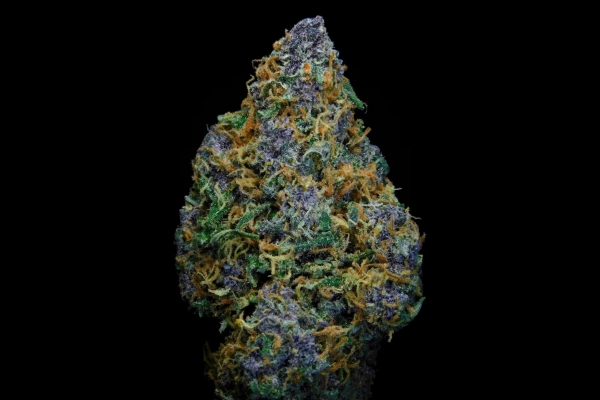
Myth-Busting Potency
Let’s get one thing straight: a purple nug doesn’t automatically mean a stronger experience. This is one of the most common myths still believed in cannabis, and it sticks around because those dark hues look dramatic. But potency is determined by cannabinoids and terpenes, not by the pigments that change a bud’s color.
Anthocyanins don’t affect how much THC is present or how your body processes it. They’re antioxidants, not intoxicants. In fact, lab results often show that a plain green strain can test higher in THC than the flashiest purple flower right next to it.
That doesn’t mean color is irrelevant. The same growing conditions that encourage pigment expression can also influence other parts of the plant’s chemistry, like how terpenes develop. A cooler grow room that helps bring out purple may also lock in more aroma or change the way flavors come through in the final product.
So yes, colorful cannabis catches your eye, but if you’re shopping for effect, look past the color. Potency lives in trichomes, terpenes, and lab reports, not in how royal the flower looks.
Reading the Clues in Color
Color might not predict strength, but it does leave behind other useful hints if you know how to read them.
- Shelf-life signals: When the flower loses vibrancy and shifts toward brown or gray, it often means it’s been sitting too long or stored in poor conditions. Bright tones usually point to a fresher product.
- Curing quality: A well-cured bud tends to hold onto its natural shades, while rushed or uneven curing can leave the flower looking dull or washed out.
- Buying without smell: In many dispensaries, you can’t always open jars or smell directly. In those cases, how colorful cannabis is becomes one of the few visual cues to judge overall quality before purchase.
- Breeding identity: Some growers lean into unique hues not for potency but for branding. A distinct purple or orange strain stands out in a crowded market, and breeders know that appeal matters.
When Color Tricks the Palate
It’s easy to assume that a purple flower should taste like berries or that an orange one will have a citrus kick. Our brains are trained to connect color with flavor, the same way we expect a red drink to taste like fruit punch. But in cannabis, color and taste don’t share that direct line.
The flavors you pick up from a strain come from terpenes, not pigments. Limonene brings out lemon zest, myrcene leans earthy and musky, and pinene feels sharp like pine needles. We all know those 3 by heart now.
While we said that two buds can look the same and feel different, it is also possible for two buds of the same strain to look completely different and still deliver the same flavor profile. Color might draw you in, but the terpenes are what keep you coming back.
Beyond the Rainbow
Appreciating colorful cannabis is part of the fun, but it shouldn’t be the only thing guiding your choice. A jar full of deep purples or fiery oranges might look incredible, yet the real quality check comes from smell, texture, and freshness. If the aroma doesn’t pop when you open the lid, the color won’t make up for it.
Texture tells another side of the story. Buds that feel sticky but not wet, that break apart without crumbling to dust, are the ones signaling proper curing. A bright color paired with a brittle flower usually means looks were the priority, not care.
The best way to shop is to treat color as a bonus, not a guarantee. Enjoy the visual appeal, but let your nose and your hands confirm what your eyes can’t. That balance is how you find THCA flower that’s both beautiful and worth your money.
